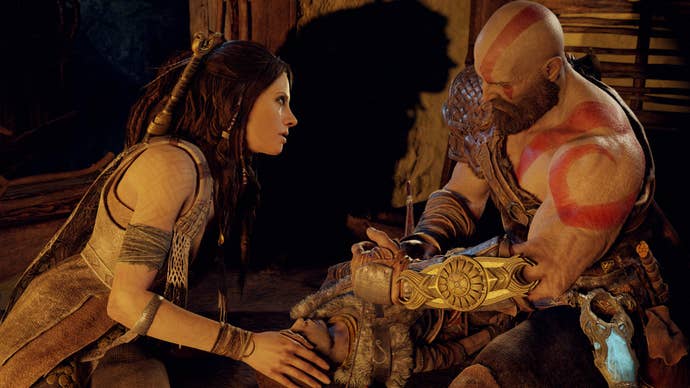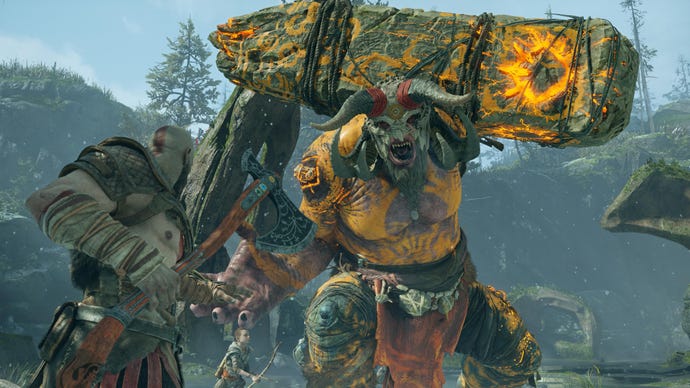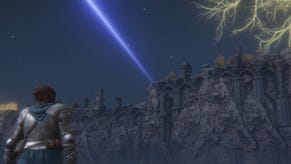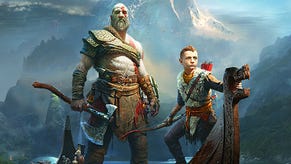God of War PC tech review - Norse a lot of big improvements
God of War is Sony's best PC port so far, but don't expect any major upgrades.
As much as it might fret some PlayStation diehards, I am fond of Sony’s new approach to bring its first-party titles to PC. Yes, those games arrive years past their relevance, at a time when they most likely have already exhausted their potential sales on PlayStation hardware.
But it’s an obviously sensible business tactic, and apart from that, it’s good for fans of video games everywhere. So here we are, with another PlayStation exclusive making its way to PC. After Horizon Zero Dawn, and Days Gone, Sony saw fit to follow those up with God of War’s 2018 sort-of-reboot-sort-of-not.
I am a big fan of God of War in general, and the new iteration in particular. I played it extensively on PS4, but as I do with most exclusives, I kept wondering how much better it could be running on a PC. Almost four years later, I finally got my wish.
The PC version of God of War - out this Friday, January 14 on Steam and EGS – is a basic port, offering a slightly refined experience, but not one that’s dramatically different from PS4.
For starters, it’s in a much better technical state at launch than Horizon Zero Dawn, and about on par with Days Gone. We’ve had access to God of War code since late December, so I got to spend time poking and prodding its various bits to see what we can do. The build is incredibly stable, and offers a largely consistent framerate. To help keep this performance on target, God of War on PC ships with DLSS, AMD’s FSR, as well as its own internal upscaler. But even running it natively, it’s easy to get framerates well beyond consoles with everything maxed out.
This is great news for those looking to go beyond 60fps, as the game can go as high as 120fps. I have not been able to get it to run at that framerate consistently, however, using an i7 9700K and an RTX 3080 Ti at 4K. Typically, it would hover between 70 and 80fps across the board. Some quiet areas can push you into the 90s, but it’s rare. Turning on Nvidia’s RTX card-exclusive DLSS setting – which comes with four quality settings – offers the needed edge to push the framerate closer to those targets. DLSS manages to boost frame rates by rendering the game at a lower native resolution before using AI tools to upscale it – and at its best, it’s often practically indistinguishable from native resolution.
God of War actually displays the render resolution of each chosen DLSS quality setting, which is rare but nevertheless welcome. The most performant setting for me has been DLSS’ Ultra Performance, which renders the game at 720p. It looks noticeably fuzzy compared to native 4K, but it got me the closest to the 120fps target. Though I did see the framerate counter reach 120fps here and there, it was mostly between 90-110fps.
For some reason, however, I could not find a way to run the game in exclusive fullscreen mode. Your choices are either windowed or borderless. This is annoying, but nowhere near a major problem in this case, particularly as God of War is not exactly a power-hungry game that suffers from not running in exclusive fullscreen, though I do wonder if fullscreen would be what’s needed to get it closer to 120fps.

The port offers a decent set of graphical options, some of which let you push past what’s possible on PS4. The two most dramatic changes are ambient occlusion and screen space reflections. Compared to the PS4 original, reflections are sharper, particularly in rooms with marble floors and various reflective sources – such as the realm travel room. The update to ambient occlusion is even more visible, as many of the areas you visit allow some light in through ceiling shafts and cracks in the wall.
However, neither of those upgrades is dramatic enough to really matter. Reflections, for instance, while improved, still omit Kratos and much of screen. They show an – admittedly less fuzzy – reflection of lights and colours, but not characters, weapons or other objects in the scene. It’s a little disappointing, but predictable, considering the hardware the original game was made for.
Though the image is sharper overall, I could still spot some of the same problems I ran into on console. There is no dedicated AA solution, so aliasing is more or less where it was on PS4, even at native resolution. I’d be interested to see if certain community-made tools can successfully inject AA into it, as the Nvidia control panel solution has been inconsistent in my time with it.
One particular option I hoped would be tweakable in the PC version is sadly not, that being FOV. The third-person camera in God of War is one of the tightest I have seen in any game. Sony Santa Monica knew this, as evident by the UI indicators alerting you to off-screen attacks, which flash in practically every fight with more than two enemies, not to mention the constant callouts from Mimir and Atreus.
I’ve always felt that it was an inelegant, if functional solution. This problem unfortunately still remains in the PC version. The camera is as close to Kratos’ back as it was on consoles, but it’s more annoying now that I’m playing on PC for a few reasons, not least of which that the higher-resolution effects make it harder to see those indicators.
Once again, however, I am not entirely surprised to see this omission. Unlocking the FOV years after the development team had moved on would require significant work to readjust asset streaming, animations, and plenty more; not entirely realistic to expect in a port arriving this late after release.
The hope is that SSM has taken this into account with Ragnarok, but considering the studio’s marriage to the idea of the intimate no-cut camera, I have my doubts. This has evidently been the most frustrating aspect from my time with the PC version of God of War. Despite the overall cleaner visuals, sharper presentation, and significantly higher framerates, you still have to contend with the incredibly narrow FOV.

Another problem from the original also returns on PC, and it’s the most surprising. Stutters when loading into new areas or transitioning to the outdoors were somewhat common on PS4, but they were typically cleverly hidden with cutscenes.
With the PC port installed on a gen 3 NVMe SSD, the game barely makes any use of that speed. Those elevator rides and realm travel sections are about as long as they were on PS4, with the added problem of noticeable stuttering as the new area loads in behind the closed door.
You could clearly tell when it happens, too, as it’s fairly obvious. The vast majority of these occur in non-combat areas, and last for a second or so – but they are noticeable. Some of the most glaring ones can occur in combat, if you’re unlucky enough to fight enemies in an area with two distinct sections. Loading into and out of the game is faster, but that’s about it.
The rest of God of War’s presentation on PC is fairly straightforward. You can turn on HDR after it’s been enabled in Windows for your monitor. It offers the same level of customization here as it did on PS4, with separate settings for luminance and paper white.
Unfortunately, while you can remap keyboard and mouse controls, you cannot do the same for controllers - another bizarre omission. In fact, the game greys out the keybind customization menu as soon as it detects a controller. I didn’t find this to be a major problem, as the same options from PS4 return, which let you swap dodge from A to B, and bring back the classic X/Y attack buttons rather than Souls-style bumpers/triggers.
I can imagine this being a much bigger problem for players who require accessibility options for certain controllers, and I honestly don’t understand why the feature can be offered for keyboard but not controllers.
The PC port of God of War is good enough to warrant a second playthrough, especially if your only time with it has been on the PS4. It’s an even better opportunity for those who missed it to experience a fine action game with a compelling, exciting narrative without having to fight the port to get it to run decently.








